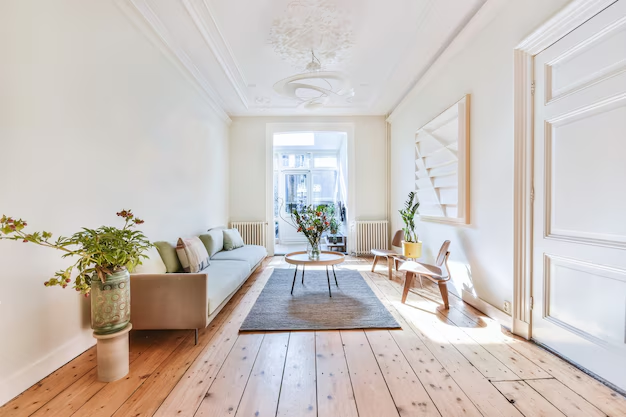Can a Bright Apartment Help Reduce Depression?
Imagine waking up each morning in a cozy, light-filled apartment that greets you with warmth and positivity. Could such an environment impact your mental health, specifically reducing depression? While numerous factors contribute to mental well-being, living in a bright environment has been found to positively influence mood and mental health. Researchers and mental health professionals often highlight the profound effect that natural light and pleasant surroundings have on alleviating symptoms of depression.
The Role of Natural Light Natural light is not just essential for physical health; it significantly affects mental health as well. Exposure to sunlight increases the brain's release of a hormone called serotonin, which can boost mood and help a person feel calm and focused. Lack of adequate exposure to sunlight, especially during the darker months, is linked to a type of depression known as Seasonal Affective Disorder (SAD).
Why a Bright Apartment Might Help1. Mood Elevation: Bright spaces with abundant natural light can help enhance mood and decrease feelings of sadness. Sunlight triggers the release of serotonin in the brain, reducing anxiety and boosting emotional well-being.
2. Better Sleep Patterns: Good lighting during the day assists in regulating sleep-wake cycles, leading to better sleep quality. Improved sleep can mitigate symptoms of depression.
3. Increased Productivity: A bright environment provides better focus and energy, increasing productivity which can contribute positively to mental health.
4. Aesthetic Comfort: Pleasant visual surroundings contribute to a sense of satisfaction and happiness, reducing stress and anxiety levels.
Accessible Solutions for a Brighter Living Space1. Use Reflective Surfaces: Mirrors and reflective decor can amplify natural light, making spaces seem brighter.
2. Light-colored Walls: Opting for lighter shades on your walls can help reflect more light, enhancing the luminosity of a room.
3. Strategic Furniture Placement: Arranging furniture to avoid blocking windows can maximize the light coming into the living space.
4. Sheer Curtains: Using sheer window coverings instead of heavy drapes can allow more sunlight to filter through.
5. Artificial Lighting: Full-spectrum bulbs mimic natural sunlight. Using these effectively can make spaces feel brighter during darker hours.
Beyond Physical Spaces: Financial and Educational Resources Creating a conducive home environment is beneficial, but addressing mental health issues often requires additional support. Access to mental health programs, financial assistance, and educational opportunities can support well-being and help relieve stressors related to financial burdens.
While a bright apartment can positively impact mental health, other aspects of life, such as financial and educational stability, are vital for holistic well-being. Here are some resources that can help lighten the load:
💰 Government Aid Programs: Many governments offer mental health support programs that could provide crucial financial assistance for therapy or counseling.
📚 Educational Grants: These can offer an opportunity for career advancement or skill acquisition, enhancing life satisfaction and reducing stress.
💳 Credit Management Solutions: Utilizing credit counseling and management programs can help manage debt, alleviating financial stress.
🏡 Rent and Housing Assistance: Subsidies and housing programs can ease financial burdens, allowing for a focus on mental health.
Utilizing available resources can amplify the benefits gained from living in a brighter home, fostering an environment that not only uplifts but also supports overall life satisfaction and mental health.
